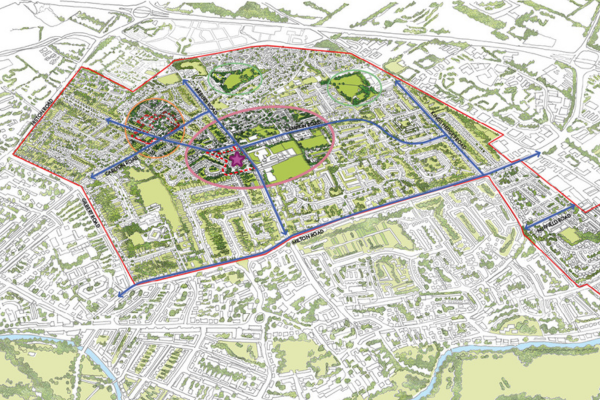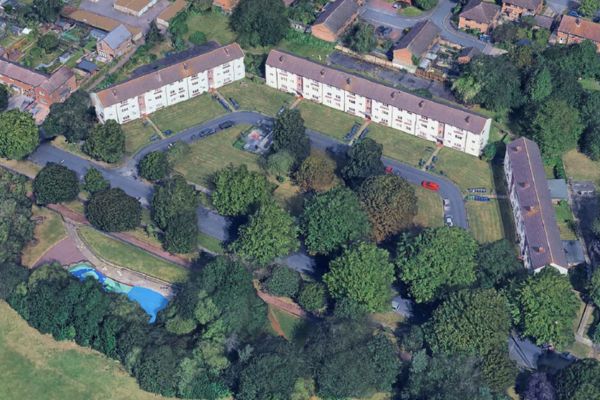Air quality annual report
We are responsible for monitoring air quality in the city. We submit an annual status report to Defra to inform them and the public on:
- the state of air quality in the city
- actions being carried out by us, the county council, and other partners to improve air quality
Submission of this report to Defra is a statutory function in fulfilment of Part IV of the Environment Act 1995 Local Air Quality Management, as amended by the Environment Act 2021.
Summary of 2025 annual report
This is a summary of the key findings of the report and priorities for the coming year.
Changes to pollutant levels and emissions in 2024
- The stable to downward trend in air pollution for both nitrogen dioxide (NO2) and particulates (both PM10 and PM2.5) observed in 2023, following the post-Covid ‘return to normal’ in 2022, has continued into 2024.
- There were no measured exceedances in national air quality target annual means for NO2 (40 µg/m3), PM10 (40 µg/m3) and PM2.5 (10 µg/m3).
- This trend was consistent across the entire monitoring network, including both automatic monitors and diffusion tubes. This improvement is likely due to a combination of factors rather than a single cause, but overall, it represents a positive trend in air quality and public health.
- The number of vehicles stayed about the same in 2024 as in 2023. Bus passenger numbers were also steady, while Park and Ride usage increased.
- Electric vehicle uptake in Cambridge and nearby commuter areas remains above the national average, helping reduce NO2 emissions. More charging points are also increasing confidence in switching to electric.
- Continued delivery of infrastructure projects by the Greater Cambridge Partnership, Cambridgeshire County Council and Cambridgeshire and Peterborough Combined Authority continues to enable the transition from private vehicles to more sustainable forms of transport including improved public transport and active travel.
- Stormier winters in 2023 and 2024 likely helped lower pollution by improving air dispersion during the winter months when pollution is typically higher. Emerging research indicates that climate change-driven shifts in weather patterns can impact air quality in both beneficial and adverse ways.
- Under advice from Defra the Air Quality Management Area (AQMA) which was declared for exceedances of NO2 in 2004 was revoked following five years of compliant monitoring data.
- The Greater Cambridge Air Quality Strategy, adopted in March 2024, replaces the previous Action Plan following the AQMA revocation in January 2025. It outlines measures to improve air quality across the region and commits to meeting World Health Organisation guidelines, which are based on strong evidence linking pollution to health risks.
What we will be working on in the coming year (2025/26) to deliver continued air quality improvements
- Work will begin on expanding the existing smoke control areas city wide (excluding permanent residential moored vessels) following public consultation early 2025. Implementation is likely to take up to 12 months.
- Targeted communication and engagement to increase awareness about air quality in the city. Raise awareness on what residents and visitors can do to reduce emissions and minimise personal exposure.
- Continue to work in partnership to support the delivery of key infrastructure projects that will improve access to public transport and opportunities for cycling and active travel.
- Work with Greater Cambridge Planning service to minimise the impact on air quality of developments coming forward over the coming year feeding into the emerging Greater Cambridge Local Plan and wider local policy documents.
What you can do
If you live in or visit the city, you can do your bit by walking or riding a bike for short journeys instead of driving. Use public transport and work more at home if you can.
If you burn solid fuel, think about whether you need to burn, and if you do, only burn approved fuels. If you are considering installing a woodburning stove only install a Defra-approved stove to minimise emissions of PM2.5.
Monitoring data for nitrogen dioxide and particulate matter (PM10 and PM2.5)
You can see a map of the monitoring stations at the bottom of this page.
UK-Air provides data for the continuous monitor on Regent Street. Air Quality England provides data for the other 4 continuous monitors.
Ricardo AEAT have ratified these data. An appropriate correction factor has been applied to the PM10 data where required.
Defra says an annual average from diffusion tubes below 60µg/m3 is a good sign that short-term nitrogen dioxide targets are being met. Levels in Cambridge are below this.
The diffusion tube data have been bias-adjusted.
Air quality monitoring station maps
Continuous monitors
Diffusion tubes



